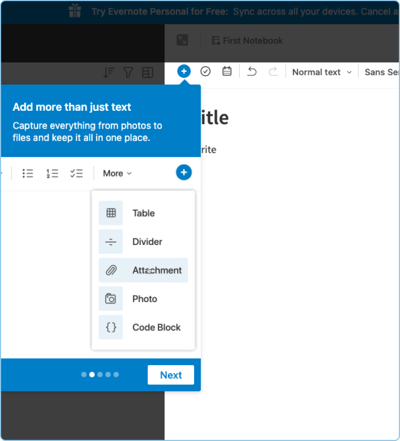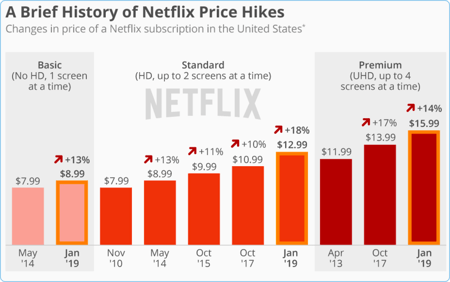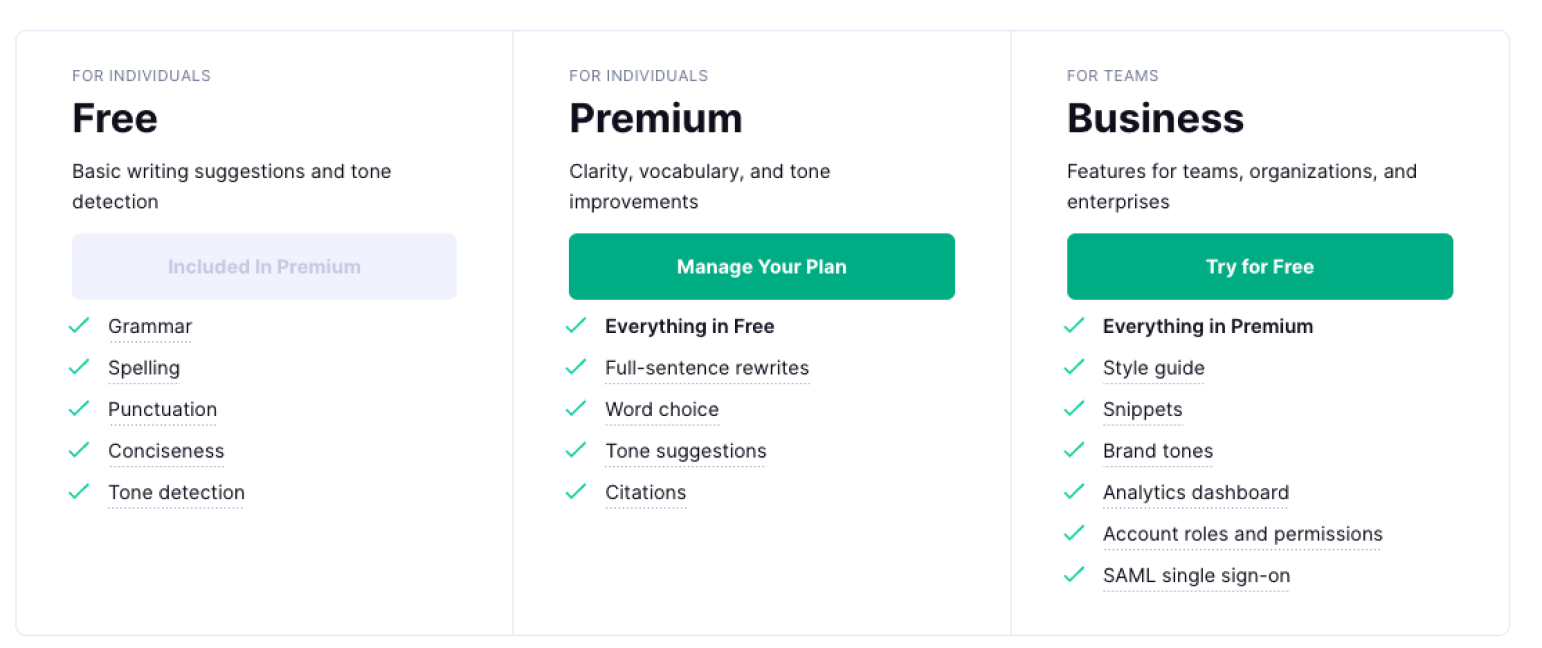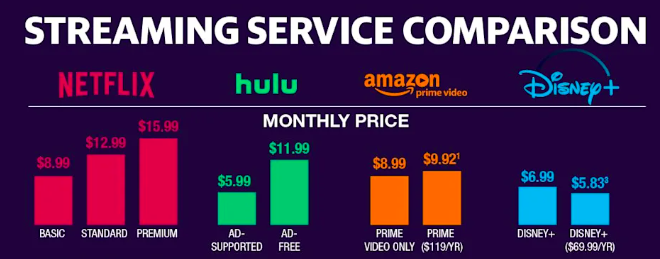Topics of this guide
Introduction
It is very exciting to see people visit your website and signup for the webinars or ebooks you worked so hard on. You see your email subscribers growing and think the business is going to do well in a few months.
But… then cash starts to burn faster and faster without more revenue coming in. Your subscribers just sit there without taking any further action.
All that hard work that went into getting leads seems to go to waste, and you’re left thinking about what went wrong.
That's why it's important to understand why your leads aren’t converting and then take steps to improve your B2B SaaS lead conversion rates.
When it comes to optimizing lead conversion for B2B SaaS, there's a lot to consider. From your pricing strategy to your SaaS business model, making small tweaks can have a big impact on your bottom line.
In this post, we'll share strategies you need to know about optimizing your lead conversion process. So whether you're just starting out in B2B SaaS or you're looking to improve your current conversion rates, this post has something for you!
SaaS Conversion Rate: What Is It, And How To Calculate It
The SaaS conversion rate is the percentage of people that take the desired action over a given period of time.
Let's say you want to calculate the SaaS lead conversion rate. You will need to know the number of leads generated in a specific period and the number of those leads that took the next desired actions (most commonly — converted into paying customers) during the same period. You can then divide these two numbers for your SaaS conversion rate.
SaaS conversion rate = ([Number of people who advanced to the stage after the lead stage]/[Number of leads]) x 100
The definition of a lead can vary for different businesses or the stage of customers in the marketing journey. Let's look at different types of lead conversion.
Types Of Lead Conversions
In SaaS, there are 4 types of Lead Conversions:
- Visitor to trial period.
- Trial to a qualified lead.
- Trial to paying customer.
- Freemium to a paying customer.
Visitor to Trial Period:
It’s essential for SaaS companies to have an easy and efficient way of converting website visitors into trial users. This can be done by providing a free trial period or offering a demo version of the product. You should also make sure that your registration process is as user-friendly as possible. Designing lead capture forms and optimizing them for mobile devices is also the key here.
Trial to Qualified Lead:
Once a visitor becomes a trial user of your product, you need to treat them as a qualified lead. This means using targeted campaigns to nurture their interest in your product. You should also track and monitor their activities. This will give you valuable insights into their interests and preferences so that you can tailor your campaigns to better meet their needs.
When it comes to converting leads into customers, qualification criteria are essential. Your criteria should be based on both business objectives and customer needs. You should look at factors such as the size of the organization, its current software solutions, and its budget. This will help you identify customers who are serious about making a purchase rather than those who are just casually browsing.
Trial to paying customer:
Lead conversion doesn't end when a customer makes their purchase. You should also include strategies to move them from trial to paying customers. This means that you need to provide a good onboarding experience, highlight the benefits of your product, and create promotional offers or discounts for loyal customers.
Freemium to paying customer:
If you offer a freemium plan, then you need to come up with ways to convert those users from free to paid customers. For example, you could create “premium” features that are only available in the paid version of your product or introduce special discounts for those who upgrade their account.
What Is A Good SaaS Lead Conversion Rate?
SaaS lead conversion rate is an important metric that business owners & marketers use to judge the performance of their marketing efforts. A high conversion rate ensures that your strategies are working in the right direction and you are more likely to generate profits.
The first step in improving your SaaS conversions rate is to measure your current conversion rate or set a benchmark. Then, you can set your goal conversion rate and start working on strategies to get to your goal.
So what makes a good SaaS lead conversion rate? There is no absolute number for it. It depends on the type of industry, your offer, brand positioning, etc.
It is utopian to expect a 100% conversion rate. In SaaS, the median conversion rate across all subcategories is 3.0%. The apps & devices category has the highest rate of 6.2%. So, at best, out of 100 leads, you can aim for 6-10 leads to become your paying customers.
Without SaaS conversion rate benchmarks, it is difficult to understand how successful your business goals are in comparison to others in the same industry. But since every product, pricing, and offer is different, you should not rely completely on industry benchmarks to set targets for your SaaS conversion rate.
Create your own benchmarks by tracking your data regularly and keep on making steady improvements month-on-month. How do you make improvements? Let's check in the next section.
5 Ways To Improve The SaaS Conversion Rate
1. Personalized onboarding to your product
You can improve the conversion rate for your SaaS product by creating personalized onboarding. This means tailoring the experience for each segment of customers, making it more relevant and useful for them.
For example, how a student uses your product might be different from how a businessman uses it. Identify their needs and desired outcomes and tailor the onboarding accordingly. If they are likely to use certain features more, inform them about those & leave the rest for discovery. Show them the features that will help them get to the outcome.
What to avoid during the onboarding process:
- Don't overload leads with too much information in a short amount of time.
- Don't send nagging emails about promotions or sales. Let them explore the product first before going into a sales conversation with them.
- Don't make the purchase or upgrade from a free trial to paid subscription too difficult. Collect the minimum amount of information you need and get them to start using the product quickly.
2. Guide users with interactive walkthroughs
An interactive walkthrough is a step-by-step guide to your product & achieving an outcome (e.g., creating the first document or onboarding team members) that will help convert passive users to active users.
Giving people a blank slate of your product to go and letting them figure out the next step creates a drop-off, as most people have high resistance to 'figuring out' things by themselves, especially with a new tool. That's when interactive guides keep them engaged and help them get to the 'aha' moment faster. When they realize the value of the product quickly, they are likely to upgrade from a free trial to a paid subscription, commit for long time periods, or upgrade their plan to a higher tier.

3. Be helpful, available & reachable
Good customer service will help make sure that people are happy with the product and that they understand how it works. Being reachable is also important because if people have questions, they need to be able to ask them easily.
Here are a few ways you can do this:
- Create help documents that people can refer to in case of any confusion or how to use a feature of your product. Include ample screenshots or videos in your documents.
- Create an on-screen resource center or a live chat for them to ask specific questions. To make live chat efficient, use automated replies to standard/common queries you observe.
- Dedicated customer support channels for your new users to help them get comfortable with your product will help build trust and convert them to paying customers or upgrade their plans.
Check out some more tactical ways (social poof, personalized content, and more) to optimize your conversion rate.
4. Use Checklists to get leads to start using the product
Use checklists on your interface, so users are reminded of the steps they need to take in order to fully benefit from your product. Keep the checklist short – no more than 5-6 checkboxes – so users can easily monitor their progress and stay motivated.
If you add a few tasks that are completed by default, such as basic profile details or template names, it will be easier for users to take action and complete the unfinished tasks because they will see some progress has already happened.
5. Identify the type of SaaS business & act accordingly
There are two main categories of SaaS businesses: low-touch and high-touch. Understand the type of business you have & take lead conversion actions accordingly
Low-touch businesses are the ones where little to no human interaction is required with leads or new customers to get them onboarded. The price point for low-touch SaaS businesses is usually low. Products are simple to understand, and there is no customization. Examples are project management tools, email marketing software, document signing tool, etc.
If you have a low-touch product, focus on getting visitors to fill out lead capture forms or sign up for free trials. Use automated lead nurturing processes such as email sequences and on-site messaging to qualify leads and convert them into paying customers.
High-touch SaaS businesses take a more personalized approach to lead conversion. The price point for high-touch SaaS businesses is usually high. Products are complex to understand, and there is often customization involved. In this case, get your SaaS salespeople to interact actively with potential customers, gather information, and provide live demos.
Popular SaaS Pricing Models
There are several pricing models that have been established to accommodate the unique needs of different SaaS companies.
Flat-rate billing
It is the model most commonly associated with software as a service. With this model, customers pay for access to your application or services on a recurring basis (typically monthly or yearly). Flat rate pricing is the simplest way to offer a SaaS tool: you sell one product, with a single set of features, at one standard price for all.
It works for offerings that are simple to understand and don't need much customization. Either your customers want your product at this pricing, or they don't. There's very little you can do to sway them.
Pay-as-you-go pricing
This allows customers to pay for usage only when they need it. This model works well for companies that offer services that may not be used regularly or are short-term in nature. For example, many cloud storage solutions use this type of model so customers can pay for only the storage they require. Or in a project management tool, customers pay based on how many team members they include in the tool.
Usage-based pricing
This is when customers pay based on how much of your product or service they use. This model works well for companies offering digital products or services that are consumed at a large volume, such as streaming media and cloud storage.
Tiered pricing
Tiered pricing is when customers pay different prices for different features. This model works well for businesses that offer a range of features, like email marketing software and project management tools.
Whichever pricing model you choose for your SaaS business model, ensure that you don't blindly chase customers by offering huge discounts all the time. Instead, grow in a sustainable and consistent way.
How To Price Your SaaS Product Right To Boost Conversions
Your SaaS business's pricing model is the foundation of your business since it serves as the basis for developing repeatable sales processes and generating recurring revenue.
However, there are a variety of objectives you'll need to accomplish within the constraints of your pricing model in order to achieve growth.
That's where SaaS pricing strategies come into the picture.
SaaS pricing strategies are used in this situation. Each of these methods is suited for a certain goal, such as quickly entering a new market or drawing in particularly valuable clients.
Penetration pricing
In this pricing, a company reduces its prices to get more people to use its product or service. This can help the test product ideas, get an initial set of customers who can give feedback, generate some word-of-mouth marketing, and give testimonials. This is a great way to gain quick market share by appealing to price-sensitive customers.
Some ideas for penetration pricing:
Offer the product at a low introductory price for the first six months, then quietly raise the price.
Lower your pricing by 50% to start, but only for the first 100 customers.
However, it can be difficult to maintain low price points for a long time and remain profitable. So while this strategy works in the initial days of product launch, it is not recommended to keep it for a long time.
For example, Netflix's standard plan was at a price of $7.9/month, and in 2019 it was at $12.99/mo, and in 2022, it's at $15.49/month.

Source: https://www.statista.com/chart/16684/netflix-subscription-prices-in-the-united-states/
Cost-based pricing
A basic pricing technique is cost-based pricing. To make sure they get a return on their investments, businesses estimate the costs associated with providing a service, such as product development and salaries, and add a specific percentage to that figure.
To guarantee a 30% profit every time, for instance, you might charge $130 for software that costs $100 to build.
Cost-based pricing isn't perfect. For example, you can't always know how much something will cost before beginning, and if your income doesn't meet or exceed your costs, then you lose money. Also, problems may pop up during the process that was not initially considered, which could impact revenue negatively. In addition, cost-based pricing fails to take into consideration what others in the market are charging.
Freemium pricing

Freemium pricing involves companies providing a limited-access version of their product in order to attract more sign-ups. Although the free version can be utilized for a long time, advanced capabilities are behind a paywall, meaning customers are required to upgrade to a paid plan to avail of some advanced features.
This is an effective way to introduce customers to your product and get them hooked, then gradually upsell them as they become more familiar with it. This type of model is often seen in mobile app stores, where users can download and use the basics for free but must pay to access more advanced features.
For example, Grammarly offers Freemium pricing — you get basics of grammar check, spelling, etc., under the 'Free' plan, but if you want word choice options and tone suggestions, you need to get the paid plan.
Competitor pricing
When you utilize competitor-based pricing, you're using your competitors' prices as a measuring stick. With this strategy, you'll price your product or service either above, the same, or below the market average.
You don't want to overprice and lose potential buyers or underprice and have people question the value of your product. In this scenario, you can use a competitor's price points as a guide for where your prices should be.
Streaming services are known to be in close proximity to each other in terms of pricing.

If you choose to use the same pricing strategies as your competitors, customers will not see your brand as different. Your product will become just another option in a sea of sameness, and it will be difficult to explain why your product is priced the way it is. So while this strategy works in the short term, to get started, eventually, you should move to value-based pricing.
Value-based pricing
Value-based pricing is when a company decides how much money to charge for its products and services based on how much value they think it will provide to its target audience.
The pricing strategy is not about a company's costs or what its competitors charge. It is entirely focused on understanding the market and tailoring the price around what audiences want from your software or product. If customers see worth in your service, you can adjust your prices higher than others in order to generate more revenue.
As an example, take a look at famous paintings or meals from expensive restaurants. The reason they come with such high price tags isn't because of the cost to make them but rather because consumers believe that the final product and experience are worth more.
Here are 4 simple questions to start with when determining your value-price:
- What do your customers value? What influences their willingness to pay?
- What ROI are you promising to your customers?
- Do you have competitors or any advantage over competitors?
- Is your brand perceived as more valuable than others?
When in confusion, follow the 10x rule -- The value your product provides to customers should be ten times the price you are charging for it.
2 Key SaaS Metrics: Calculate How Much Money You Make From Your Customers
Keeping an eye on key metrics in your business can help you track and measure your progress. By tracking your progress, you can see whether you are making improvements or not. This information can help you make decisions about where to focus your efforts in order to improve your business.
One such key metric is — Annual recurring revenue (ARR).
It is the amount of revenue a company expects to generate in a 12-month period from customers who have agreed to pay for services or products on an annual basis. It's important to calculate ARR because it gives you a snapshot of the company's potential cash flow and can help you make decisions about future growth.
To calculate your Annual Recurring Revenue, take the revenue generated from yearly subscriptions and upgrades, then subtract the amount lost from cancellations.
ARR = (Overall Subscription Cost Per Year + Recurring Revenue From Add-ons or Upgrades) - Revenue Lost from Cancellations.
ARR is often confused with ACV. So let's clear that confusion.
ACV, or annual contract value, is a metric that measures the average contract size of your customers. It is calculated by taking the total value of all annual contracts, dividing it by the number of customers whose contracts make up that amount, and then multiplying it by a certain multiplier.
Let’s say you have three customers
- Customer A pays $1000/year for 1 year.
- Customer B pays $500/year for 2 years.
- Customer C pays $300/year for 3 years.
ARR:
For year 1, your ARR would be:
$1000+$500+$300=$1800
For year 2, your ARR would be:
$500+$300=$800
ACV:
All three customers are paying you in this first year.
Year 1: ($1000 + $500 + $300) / 3 = $600
Your ACV for year two goes down because you have fewer customers. Here’s the calculation:
Year 2: ($500 + $300) / 2 = $400
ARR gives you a snapshot of your business's health and tells you how fast you need to grow to keep up the momentum. ARR measures growth from one year to the next, while ACV is used over time to gauge the performance of your sales and customer success teams.
They Won't Come Just Because You Built. Here's What To Do Next
The number one challenge for small business owners is marketing, and if you're feeling overwhelmed trying to keep up with marketing efforts for your growing business, know that you are not alone. Even if you have a few marketers on staff, as your business grows, your modest in-house team may start feeling overwhelmed.
That is when it's time to get help from a SaaS growth marketing agency, like Inturact.
Inturact can help you grow faster than you could on your own. We have expertise in specific channels or strategies that can be difficult to replicate in-house. We can also help you set up the technology and automations needed to ensure your marketing efforts are consistently delivering results.
Plus, Inturact has a pool of experts in different disciplines, such as SEO, social media, content marketing, email marketing, and more. It's like having an entire team of marketers working on your business. Our team of experienced professionals can help you develop and execute campaigns that improve, increase website traffic, generate more leads, convert them to paying customers, and ultimately grow your business.
We understand that each of our clients has unique needs and goals, so we provide customized services tailored to those objectives while ensuring that your marketing campaigns are successful. From setting up campaigns to ongoing analysis and optimization, Inturact is here to help you reach success.









